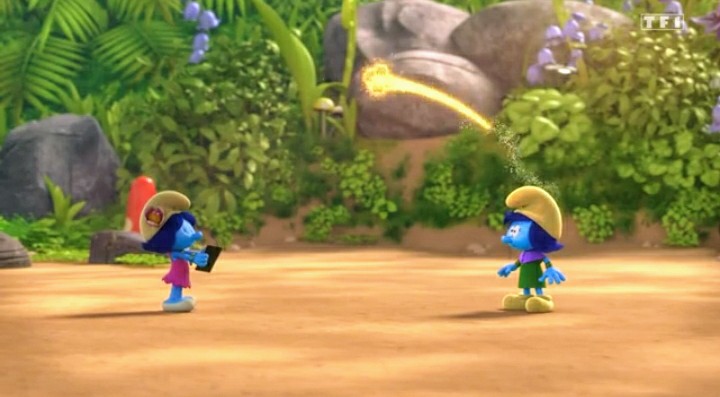Remember the thrill of launching into a Smurf Storm in League of Legends? The feeling of invincibility, of being a force of nature, of carrying your team to victory? Well, those days are gone. A once-mighty force, the Smurf Storm has lost its mojo, leaving behind a trail of baffled players and a sense of nostalgia for a forgotten era. What happened?

Image: smurfs.fandom.com
It’s a story of evolving meta, adapting strategies, and the ever-changing landscape of online gaming. We’ll delve into the decline of the Smurf Storm, tracing its roots, exploring the factors that contributed to its downfall, and offering insights into how the game has moved on.
A Smurf’s Tale: From Apex Predator to Fallen Star
In the early days of League of Legends, the Smurf Storm was a meta-defining strategy. It involved meticulously farming for early leads, often with champions like Twisted Fate or Syndra, and then snowballing that advantage into a unstoppable storm of aggression. The Smurf Storm was the ultimate expression of power in a lane, turning a game into a one-sided onslaught. This strategy wasn’t just effective; it was thrilling. The feeling of dominating an opponent, using superior skill and strategy, was intoxicating.
But the gaming world is a fickle mistress. As League of Legends evolved, so did the strategies within it. The meta shifted. Champion balances changed, new items were introduced, and the game’s pace accelerated.
The Shifting Sands: A New Meta Emerges
The rise of the “roaming” meta marked the beginning of the Smurf Storm’s decline. Champions like roaming supports, or those with strong early-game roaming potential, became increasingly popular. This allowed teams to exert pressure across the map, making it harder for a laner to achieve the overwhelming lead necessary for a successful Smurf Storm. The game became less reliant on individual dominance and more about coordinated play, a shift that left a gaping hole in the Smurf Storm’s foundation.
Another critical factor was the introduction of new items and champion updates. The emergence of items like “Galeforce” and “Riftmaker” gave champions more control over early game fights, effectively countering the Smurf Storm’s aggressive playstyle. Simultaneously, champions like Akali and Aphelios became meta staples, with their superior scaling and roaming capabilities further stifling the Smurf Storm’s reign.
The Legacy of the Smurf Storm: A Glimpse into the Past
The Smurf Storm might be a ghost of its former self, but its legacy endures. It reminds us of the dynamic nature of the gaming world, where strategies rise and fall with the tide of change. It highlights the importance of adaptation and embracing new strategies to remain competitive.
The Smurf Storm’s decline also points to the shift in the game’s focus. Gone are the days of dominant individual plays; now, coordination, teamwork, and adaptability are paramount. The game’s emphasis has shifted towards a more strategic, nuanced approach.

Image: therebelchick.com
Looking Ahead: Embracing the New Meta
So, is there space for the Smurf Storm in today’s League of Legends? The answer is a qualified yes. While it might not be the dominant strategy it once was, certain champions and matchups still create opportunities for aggressive plays.
However, the modern Smurf Storm requires a nuanced understanding of the current meta and the ability to adapt according to the matchup and team composition. It’s no longer a one-size-fits-all approach; it demands a deep understanding of the game’s intricacies to be truly effective.
The Smurfs Storm Loses Her Mojo
The Smurf Storm’s Final Stand: A Legacy of Skill and Domination
The Smurf Storm might be gone, but its spirit lives on. It reminds us of the power of mastering a strategy, of the satisfaction of achieving dominance in the virtual world. For many players, it embodies a simpler era of League of Legends, a time when individual lanes mattered more than global map pressure.
So the next time you see a Smurf Storm attempt, remember the history behind it. Remember the days of early-game aggression, of snowballing leads, and of the sheer thrill of carrying your team to victory. In the end, the Smurf Storm’s legacy isn’t about winning or losing; it’s about the journey, the skill, and the passion for the game that fueled it. It’s a reminder that in the ever-evolving world of competitive gaming, even the mightiest of storms eventually lose their mojo.





